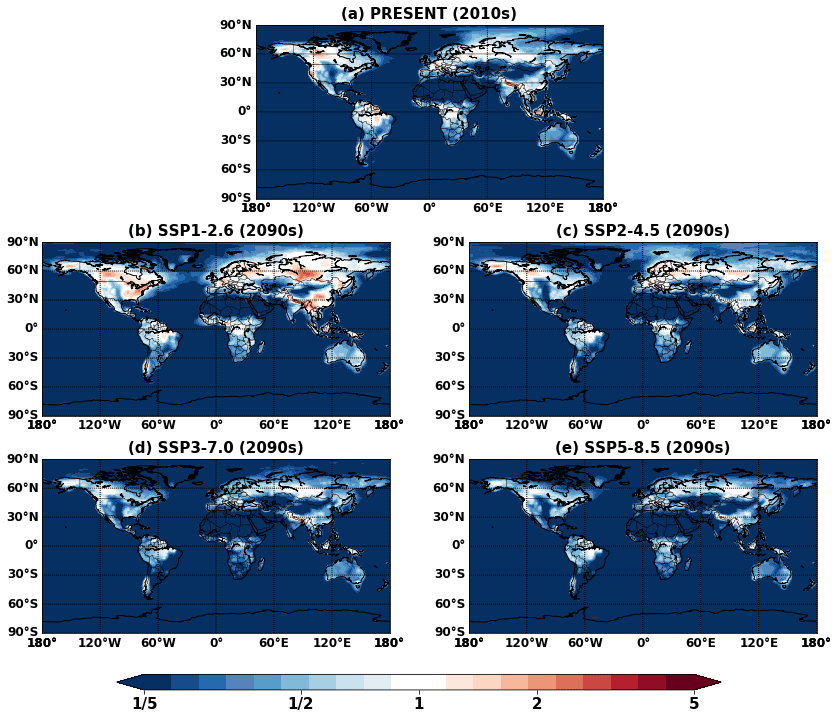Future changes in IEPOX-SOA under shared socioeconomic pathways: importance of explicit chemistry
Submitter
Jimenez, Jose-Luis — University of Colorado
Jo, Duseong — University of Colorado Boulder / NCAR
Area of research
Aerosol Processes
Journal Reference
Science
A modeling study of the dominant fraction of isoprene SOA (IEPOX-SOA) under different shared socioeconomic pathways (SSP) was conducted using both explicit chemistry and volatility basis set (VBS) parameterizations. Isoprene emission was shown to be a main driver, while CO2 inhibition has major/uncertain effects. Explicit chemistry is more realistic and can change SOA by 50%.
Impact
This work explores key sensitivities of this important SOA component, IEPOX-SOA, in future climate scenarios. Moreover, it shows discrepancies between the explicit chemistry mechanism and VBS parameterization. This result highlights the need for more explicit chemistry, or for parameterizations that capture the dependence on key physicochemical drivers when predicting SOA concentrations for climate studies.
Summary
Volatility-based SOA parameterizations have been adopted in many recent chemistry modeling studies with reasonable performance compared to observations. However, assumptions and structural simplifications made in these empirical parameterizations can lead to substantial errors when applied to future climatic conditions as they do not include the mechanistic understanding of processes (since they are just fits to laboratory studies of SOA formation). This is especially the case for SOA derived from isoprene epoxydiols (IEPOX-SOA), for which we have a higher level of understanding of the fundamental processes than is currently parameterized in most models. Therefore, in this study, future IEPOX-SOA concentrations were predicted using both explicit chemistry and reactive uptake processes using the Community Earth System Model 2 (CESM2.1.0) and results compared to a widely used lumped Volatility Basis Set (VBS) parameterization in CESM2. Four Shared Socioeconomic Pathways (SSP) were explored (for the middle and end of the 21st Century). Various dependencies were explored, such as isoprene emissions, sulfur emissions, CO2 inhibition of isoprene emissions, and aerosol pH. IEPOX-SOA is predicted to increase on average under all future SSP scenarios but with some variability in the results depending on regions and the scenario chosen. Isoprene emission was shown to be the main driver of change, but changing yields driven by sulfur emission changes are also important. Sensitivity to CO2 inhibition has large but uncertain effects. The VBS scheme predicts a nearly constant SOA yield from isoprene emissions across all SSP scenarios, thus mainly following isoprene emissions, and not heterogeneous chemistry (that is controlled by aerosol properties). Similar discrepancies between modeling approaches likely occur for other SOA components.



